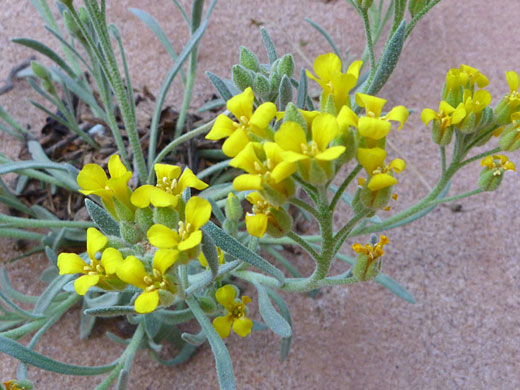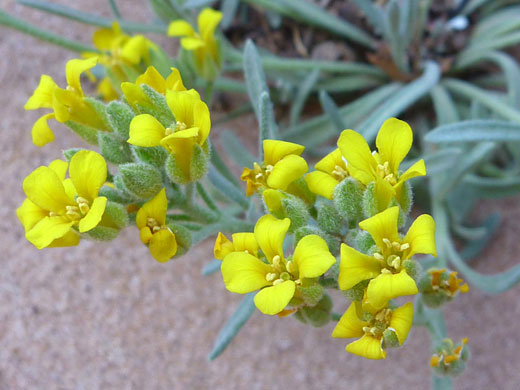Common name:
Arizona bladderpod
Family:
Scientific name:
Physaria arizonica
Main flower color:
Range:
North Arizona and southwest Utah
Height:
Up to 5 inches
Habitat:
Gravelly and sandy locations, sagebrush plains, pinyon-juniper woodland; 3,300 to 7,200 feet
Leaves:
Narrowly oblanceolate, up to 2 inches long
Season:
April to June
Despite its relatively small geographical range, physaria arizonica is quite variable in appearance. The greenish-grey stems, leaves and sepals are covered by short, rough hairs (trichomes), and each hair is branched, usually into 6 or 8. The stems also branch, from the woody base of the plant, and are mostly erect, but only a few inches tall. Leaves are narrow and have pointed tips. Those at the base are slightly wider towards the apex and are short (around one inch long), while stem leaves are essentially linear, but longer, up to 2 inches. Stem leaves tend to bend downwards later in the season.
The stems bear dense, elongated clusters of small yellow flowers in spring and early summer. The four sepals are yellowish green in color, and ovate in outline. Two have a slightly different shape than the other two. Petals are spreading, non-overlapping, and often curled backwards.
The stems bear dense, elongated clusters of small yellow flowers in spring and early summer. The four sepals are yellowish green in color, and ovate in outline. Two have a slightly different shape than the other two. Petals are spreading, non-overlapping, and often curled backwards.
All Contents © Copyright The American Southwest | Comments and Questions | Contribute | Site Map



